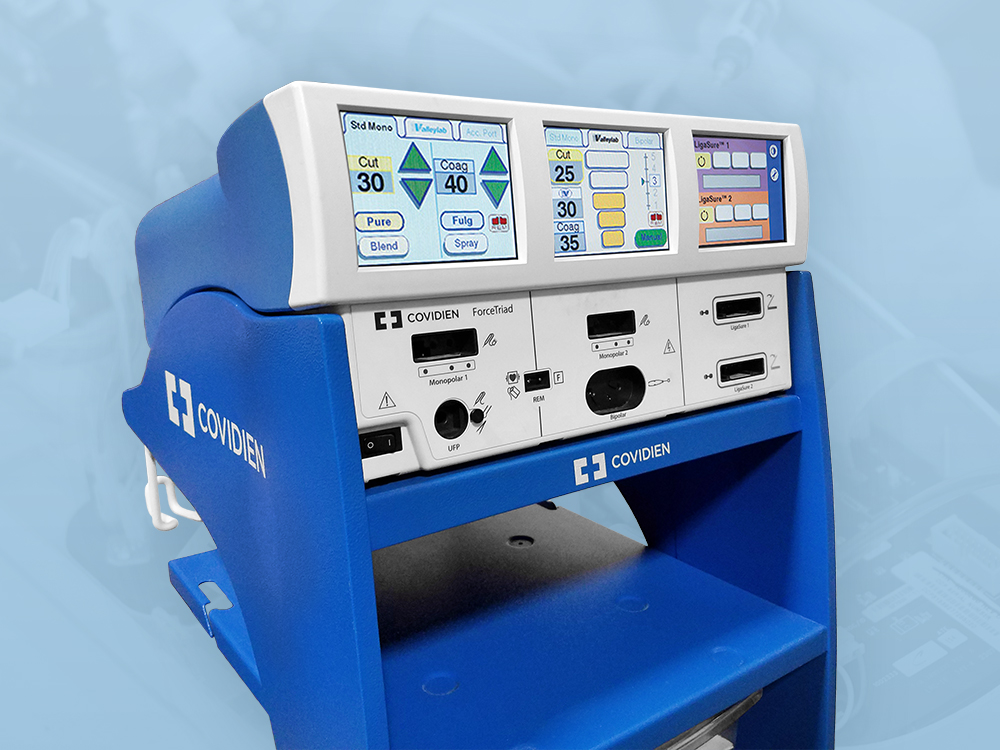How To Choose the Right Electrosurgical Unit for Your Practice
April 1, 2025

Electrosurgical units are ubiquitous in today’s healthcare field. They’re found in almost every type of medical facility, from office-based dermatology practices to full-featured operating rooms. While most ESU models rely on the same technology to operate, they are available in a wide range of configurations to suit the needs of each application. Before you purchase an ESU for your facility, you need to answer these questions:
- What kind of electrosurgical unit do you need?
- What additional capabilities or features do you need for your ESU?
- Is a refurbished electrosurgical unit a good option for your facility?
- Do you have a plan for buying ESU accessories?
What Kind of Electrosurgical Unit Do You Need?
While electrosurgical units are used in most of today’s surgical interventions, the units themselves vary widely. The most defining characteristic of an ESU is its output power — usually ranging from less than 10 watts to more than 300 watts. Here is a quick description of common ESU models, from lowest to highest power output:
Desiccator / Hyfrecator
Desiccators and hyfrecators are most commonly found in an office care setting. They are often used to aid dermatologists in performing simple skin procedures, and are known for their streamlined design and limited modes of operation. Typically, desiccators and hyfrecators are ground referenced machines that don’t require the use of a return pad. These models typically have power thresholds under 50 watts, but can deliver as few as 10 watts. Common modes of operation include cut, blended cut, pinpoint coagulation.
Standard Electrosurgical Unit
Standard electrosurgical units are used in operating room settings, and can vary in power outputs to suit specific clinical needs. At the lower end, doctors at a specialty facility could use a 120-watt ESU as a more robust alternative to a desiccator or hyfrecator. An output of 200 watts would suffice for an ambulatory surgery center, while many full-featured operating rooms opt for a 300-watt ESU. Common modalities of standard electrosurgical units include cut, blend, coagulation variations, fulguration, and bipolar operation.
Additional Capabilities and Features
Depending on your facility’s clinical needs, you might need specialty equipment or advanced features to accompany standard ESU operation.
Vessel sealing
Some advanced electrosurgical units come with vessel sealing, which allows clinicians to fuse smaller blood vessels together. This feature is especially helpful during surgical inventions involving the pulmonary and lymphatic systems.
Specialty Accessories
If you operate a multi-specialty facility, it’s a good idea to make sure the ESU you purchase has a wide range of compatible accessories that offer increased customization. For example, ablation ESU accessories can offer your facility enhanced capabilities without the purchase of a full-featured ablation system.
Surgical Smoke Evacuation
Recent studies show that surgical smoke produced by an electrosurgical unit can contain not only toxic gases and particulate matter, but also viruses and bacteria. To properly handle surgical smoke in your operating room or procedure suite, masks and ventilation simply aren’t enough to prevent contact with these dangerous substances. Consider purchasing a smoke evacuator, which is specifically designed for use with an ESU and will help to protect your staff, your patients, and yourself.
Is a Refurbished ESU an option?
Purchasing a refurbished electrosurgical unit can save your facility valuable budget dollars, but the reduced cost isn’t the only benefit. Aside from the immediate purchasing cost, the extra funds saved can help your facility down the road by creating more room in your budget. Opting for a professionally refurbished, late-model ESU can also help to decrease training time for your staff.
The process of finding a reliable, properly refurbished ESU can sometimes require more research and planning. If you think one of these units might be right for your facility, read our Refurbished ESU Guide for more information.
Do You Have a Plan for Your ESU Accessories?
Electrosurgical units of all types require accessories for use. Common accessories include pens, pencils, footswitches, and grounding pads which are available in disposable or reusable configurations. Beyond basic accessories, your facility might also choose to purchase ablation or arthroscopy, which are often more specialized.
When choosing accessories for your electrosurgical unit, it’s important to look beyond surface compatibility. An accessory might be technically compatible with the ESU you purchased, but is it protected by the unit’s safety guidelines? This isn’t always a given, so it’s worthwhile to double check.
If you already have an ESU at your facility but are seeking to grow your fleet, it’s a good idea to stick with the same brand and model. This will allow you to standardize your accessories and save money by purchasing them in bulk.
For a complete list of suggested electrosurgical unit accessories, view our ESU Essential Accessories Checklist.